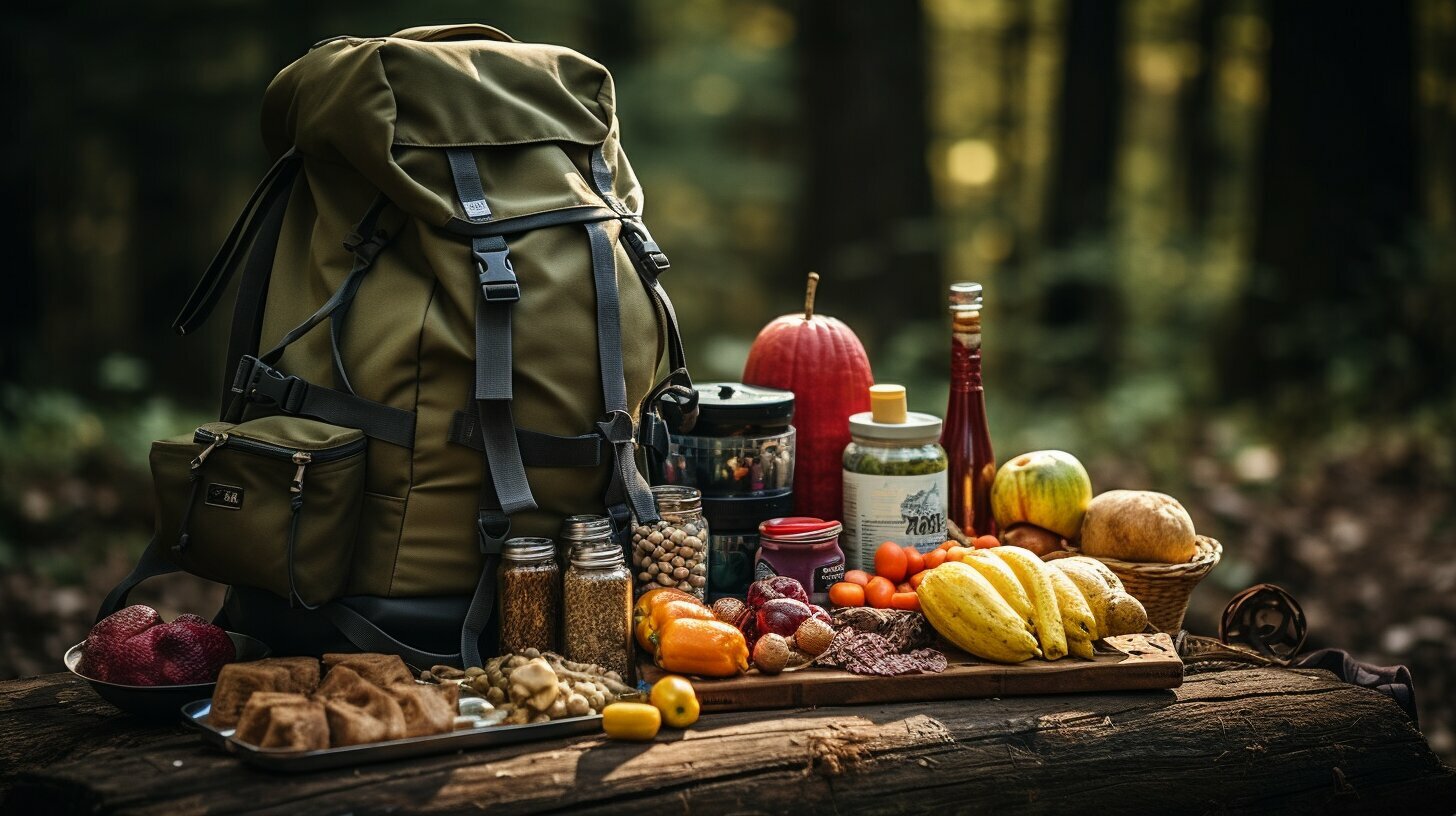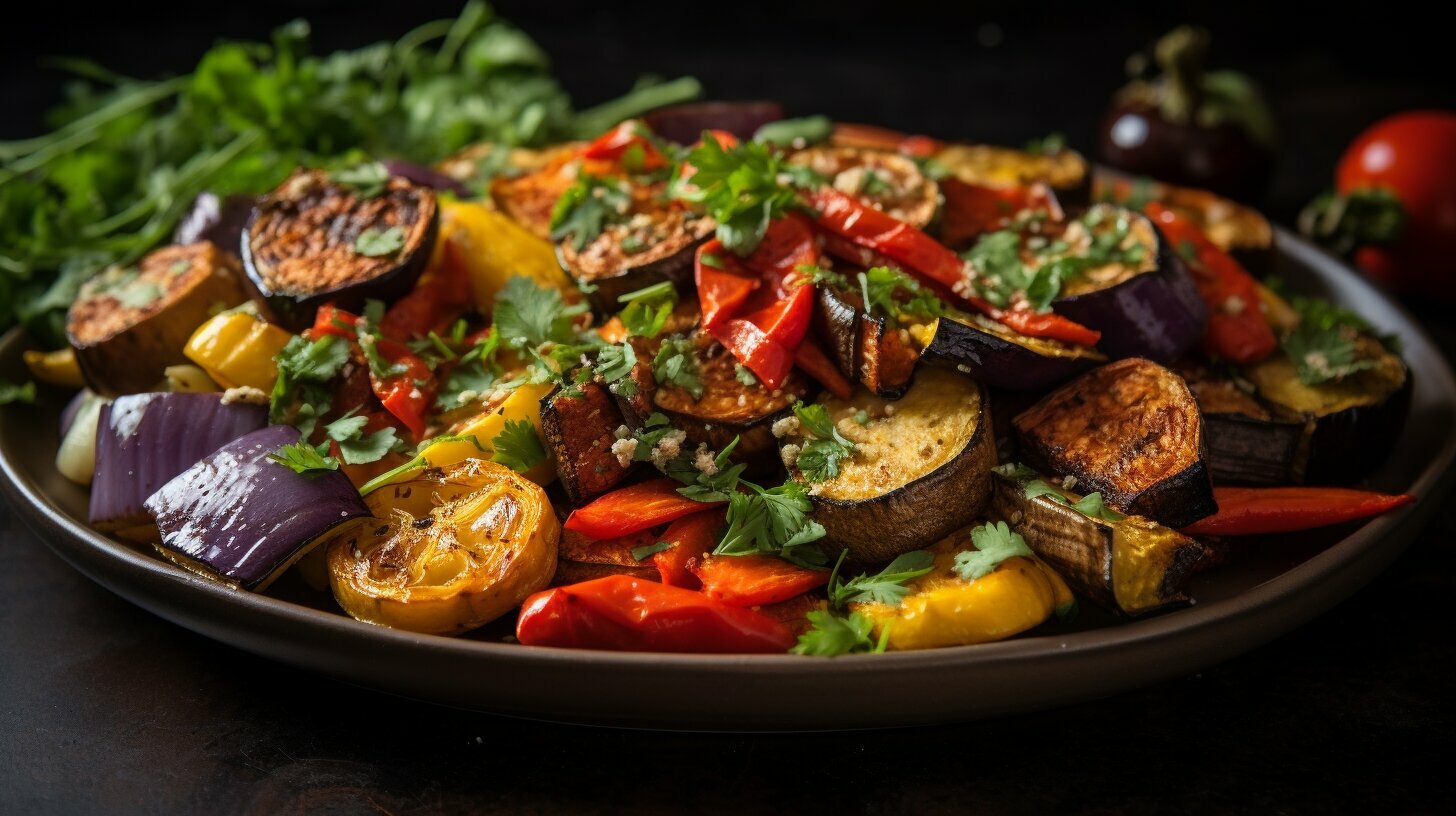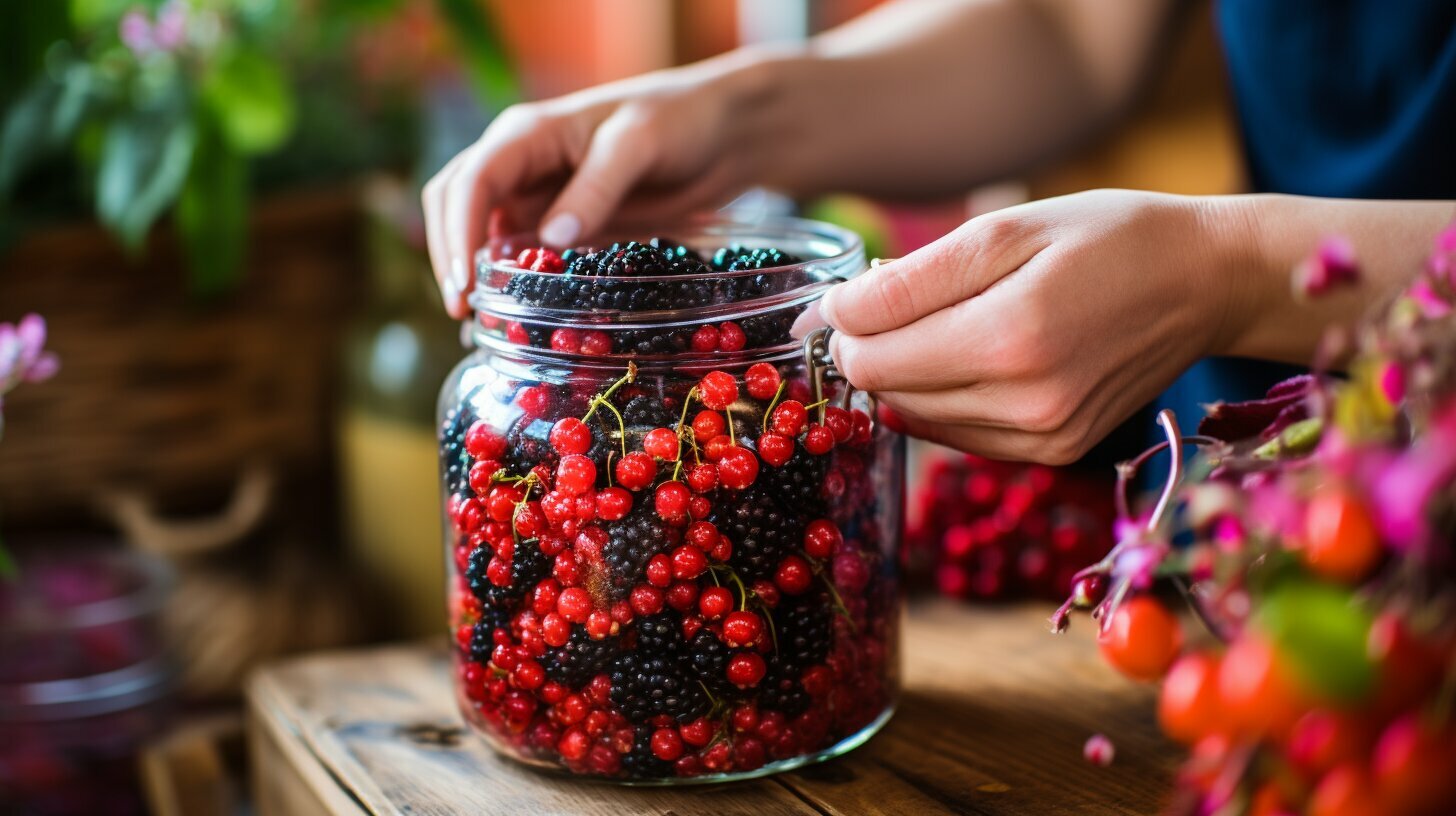Welcome to my article on the best survival food options for emergency preparedness. In times of crisis, having a well-stocked emergency kit is crucial, and food is one of the most important components. Choosing the right survival food options can ensure that you and your family have nourishing meals during an emergency, providing the energy and sustenance needed to face difficult situations.
In this article, I will provide an overview of the best survival food options available and offer valuable tips on how to choose and store emergency food supplies. Whether you are preparing for natural disasters, power outages, or other emergencies, this guide will give you the information you need to make informed decisions and stay safe and healthy.
Key Takeaways:
- Choosing the right survival food options is crucial for emergency preparedness
- Well-stocked emergency kits should include a variety of non-perishable and long-lasting food items
- Proper storage and rotation of emergency food supplies is essential
Importance of Emergency Preparedness Foods
As someone who has experienced the effects of natural disasters firsthand, I cannot stress enough the importance of having emergency preparedness foods in your survival kit. During times of crisis, access to grocery stores and restaurants may be limited or even impossible. That’s why it’s crucial to have a stockpile of long-lasting, nourishing food options that can help you sustain yourself and your family until help arrives or the situation improves.
Emergency preparedness foods should be a top priority when it comes to disaster planning. These foods are specifically designed to withstand harsh conditions and have a longer shelf life than regular groceries. They are easy to store, require little to no preparation, and provide the necessary nutrients to keep your body functioning properly during stressful times.
Disclosure: When you buy through links on our site, we may earn an affiliate commission.
Having a well-stocked emergency food supply can also bring peace of mind, especially in regions that are prone to natural disasters like hurricanes, earthquakes, or wildfires. When you know you have access to food and water, you can focus on other important things like staying safe, finding shelter, and helping others in need.
The bottom line is that emergency preparedness foods are not an option but a necessity. Investing in quality survival food options is a small price to pay for the comfort and security they can provide during a crisis.
Top-Rated Survival Food Brands:
When it comes to choosing the best survival food options for your emergency kit, it’s important to consider the quality and reputation of the brands available. Here are some of the top-rated survival food brands on the market:
| Brand | Features and Benefits |
|---|---|
| Mountain House | Offers a wide variety of freeze-dried meals with a shelf life of 30 years. Known for their high-quality, great taste, and easy preparation. |
| Wise Company | Provides a range of emergency food kits and long-term food supplies. Offers affordable options with a shelf life of up to 25 years. |
| Augason Farms | Has a large selection of freeze-dried and dehydrated foods, as well as emergency food kits. Offers high-quality products with a long shelf life. |
| Legacy Food Storage | Offers a variety of freeze-dried meals and bulk food options. Known for their high-nutrition, non-GMO, and gluten-free products with a shelf life of up to 25 years. |
With these top-rated survival food brands, you can trust that you are getting high-quality and reliable food options for your emergency kit. Consider your needs and budget when choosing the best brand and products for you.
Affordable Survival Food Kits
If you’re looking to stock up on emergency food supplies without breaking the bank, there are affordable survival food kits available that provide good value for money. These kits typically contain non-perishable food items that have a long shelf life and can sustain you during an emergency.
One of the best affordable survival food kits is the Wise Company 5-Day Survival Backpack. Priced at under $70, this kit includes enough food and water for one person for five days. The backpack itself is durable and water-resistant, making it suitable for use in any weather conditions.
| Kit Name | Price | Contents |
|---|---|---|
| Augason Farms 72-Hour Emergency Food Kit | $25 | 4,160 calories of non-perishable food items |
| ReadyWise Emergency Food Supply | $79 | 60 servings of freeze-dried food and drinks |
| Mountain House Classic Bucket | $109 | 12 pouches of freeze-dried meals |
Other affordable kits worth considering are the Augason Farms 72-Hour Emergency Food Kit, ReadyWise Emergency Food Supply, and the Mountain House Classic Bucket. Each of these kits offers a variety of non-perishable food items at a reasonable price point, providing a cost-effective solution for emergency food storage.
Remember, choosing an affordable kit doesn’t mean compromising on quality. It’s essential to review the contents of a kit to ensure that it meets your specific needs and requirements, and that the food items are of good quality. You should also consider factors like the kit’s weight and portability, as well as storage conditions, when making your selection.
Non-Perishable Survival Foods
When it comes to emergency preparedness, non-perishable foods are a must-have in every survival kit. These foods have a long shelf life, allowing you to store them for an extended period without worrying about spoilage. Additionally, they are packed with essential nutrients that can help sustain you during emergencies when other food sources may not be available.
Here are some non-perishable survival foods that you should consider including in your emergency kit:
- Canned meats (such as tuna, chicken, and beef)
- Canned fruits and vegetables
- Trail mix and nuts
- Peanut butter
- Crackers and rice cakes
- Cereal and granola bars
These items are easy to store and have a long shelf life, making them perfect for emergency situations. You can also mix and match non-perishable food items to create a balanced and nutritious meal.
Remember to check the expiration dates on your non-perishable foods regularly and rotate them out as needed to ensure that they remain fresh and usable during an emergency.
Benefits of Non-Perishable Foods
Non-perishable foods offer several benefits when it comes to emergency preparedness. First, they have a long shelf life, which means you can store them for months or even years without worrying about spoilage. This makes them ideal for stockpiling in your emergency kit.
Non-perishable foods are also packed with essential nutrients that can help you stay healthy and energized during an emergency. Many non-perishable food items are high in protein, fiber, and healthy fats, which will help you feel full and satisfied. This is especially important during emergencies when you may not have access to other food sources.
Finally, non-perishable foods are easy to store and transport. They come in compact packaging that is lightweight and easy to carry with you wherever you go. This makes them ideal for use during evacuations, natural disasters, and other emergency situations.
Freeze-Dried Survival Meals
When it comes to emergency food storage, freeze-dried survival meals are a popular and convenient option. These meals have come a long way since their early days of being bland and unappetizing. Today, many reputable brands offer high-quality freeze-dried meals that are flavorful, nutritious, and easy to prepare.
One of the biggest benefits of freeze-dried meals is their extended shelf life. They can last up to 25 years when stored properly, making them an ideal choice for long-term emergency preparedness. They are also lightweight and compact, making them easy to store and transport.
Preparing freeze-dried meals is simple and requires only boiling water. All you have to do is add water to the pouch, wait a few minutes for it to rehydrate, and your meal is ready to eat. Additionally, the freeze-drying process preserves the nutrients in the food, so you can be sure you are getting a well-balanced meal.
Some popular brands of freeze-dried survival meals include Mountain House, Wise Company, and Backpacker’s Pantry. These brands offer a variety of meals, from breakfast to dinner options, and cater to different dietary needs, such as gluten-free or vegetarian.
Survival Food Supplies: Best Canned Foods
When it comes to survival food supplies, canned foods are a must-have. They have a long shelf life, are easy to store, and provide essential nutrition during emergencies. Here are some of the best canned foods to consider including in your emergency kit:
| Food Item | Benefits |
|---|---|
| Canned beans | High in protein, fiber, and essential nutrients. They are also versatile and can be added to various dishes. |
| Canned fruits and vegetables | Provide essential vitamins and minerals. They can be eaten as a standalone snack or added to soups and stews. |
| Canned meat and fish | High in protein and can help keep you full for longer. They are also an excellent source of essential nutrients, such as omega-3 fatty acids. |
| Canned soups | Provide hydration and essential nutrients. They are also easy to prepare and can be eaten as a standalone meal. |
Make sure to check the expiration dates of your canned foods and rotate them regularly to ensure their quality and freshness.
Tip: Don’t forget to bring a can opener or a multi-tool with a can opener attachment in your emergency kit.
Survival Food Storage Tips
When it comes to preparing for emergencies, having the right survival food is crucial. However, equally important is keeping it stored properly so that it remains usable when you need it most. Here are some survival food storage tips to keep in mind:
- Choose the right packaging: When storing survival food, it’s important to choose packaging that will keep it safe from moisture, air, and pests. Consider using airtight containers or Mylar bags with oxygen absorbers to extend the shelf life of your food.
- Control the temperature: Ideally, survival food should be stored in a cool, dry place with a consistent temperature. Avoid storing food in areas that are subject to extreme heat, such as garages or sheds, as this can cause spoilage.
- Rotate your stock: To ensure that your survival food remains fresh and usable, it’s important to rotate your stock regularly. Use the first-in, first-out (FIFO) method to keep track of expiration dates and ensure that you’re always using the oldest food first.
- Organize your supplies: When storing survival food, it’s essential to keep it organized so that you can easily access what you need in an emergency. Consider using stackable containers or shelving to keep your supplies neat and easily accessible.
By following these survival food storage tips, you can ensure that your emergency food supply remains usable for the longest possible amount of time, giving you peace of mind when it matters most.
Conclusion
As a professional copywriting journalist, I hope this article has provided useful information on the best survival food options for your emergency kit. Remember, emergency preparedness is crucial, and having the right food supplies is an essential part of being prepared for any unexpected situation.
We have discussed the importance of emergency preparedness foods, top-rated survival food brands, affordable survival food kits, non-perishable survival foods, freeze-dried survival meals, and the best canned survival foods. Each of these food options has its own unique benefits that cater to different situations and budgets.
But, it’s not just about having the right food supplies. It’s equally important to store them properly. In the final section, we discussed some valuable survival food storage tips that can help maximize the shelf life and usability of your emergency food stockpile.
In conclusion, I urge you to take action and ensure you have the best survival food options in your emergency kit. By doing so, you can be confident that you and your loved ones are well-prepared for any unexpected events that may come your way.
FAQ
Q: Why is it important to have emergency preparedness foods?
A: Emergency preparedness foods are essential because they provide sustenance and nourishment during emergencies, ensuring you have the energy and nutrition you need until help arrives or the situation improves.
Q: What are some top-rated survival food brands?
A: Some top-rated survival food brands include XYZ Brand, ABC Brand, and DEF Brand. These brands are known for their reputation, reliability, and high-quality products, making them great options for your emergency kit.
Q: Are there affordable survival food kits available?
A: Yes, there are affordable survival food kits available that offer cost-effective solutions for stocking up your emergency kit on a budget. These kits provide various options at different price points, allowing you to find the best fit for your financial constraints.
Q: What are non-perishable survival foods?
A: Non-perishable survival foods are food items that have a long shelf life and do not require refrigeration. They are essential for long-term emergency preparedness and include items such as canned goods, dried fruits, nuts, and granola bars.
Q: What are freeze-dried survival meals?
A: Freeze-dried survival meals are convenient and popular options for emergency food storage. They are lightweight, easy to prepare, and retain the nutrients of the original food. Some reputable brands that offer high-quality freeze-dried survival meals are XYZ Brand, ABC Brand, and DEF Brand.
Q: What are the best canned survival foods to include in an emergency kit?
A: The best canned survival foods to include in your emergency kit are those with a long shelf life and provide nutrition, taste, and convenience. Some essential canned food items include canned beans, vegetables, fruits, meats, and soups.
Q: How can I effectively store survival food?
A: To effectively store survival food, it is important to use proper packaging, control the temperature, rotate your stock, and organize your supplies for easy access. These measures help maximize the shelf life and usability of your emergency food stockpile.




